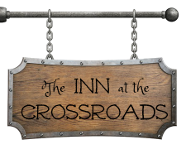“He could still recall the sounds of the three bells, the way that Noom’s deep peals set his very bones to shuddering, the proud strong voice of Narrah, sweet Nyel’s silvery laughter. The taste of wintercake filled his mouth again, rich with ginger and pine nuts and bits of cherry…” -A Feast for Crows

Modern Wintercakes

Elizabethan Wintercakes
Our thoughts:
No wonder Areo Hotah remembered these wintercakes fondly. Biting into one is like tasting a memory- the memory of a childhood characterized by roaring fires in stone keeps, the smell of leather, and warm smiles from bearded men. Eating one of these cakes is like finding something you lost years ago and had forgotten how much you loved; it is like coming home.
Needless to say, we loved both of these recipes. In the modern cake, the spice of the ginger combined with the tang of the cherries is reminiscent of an English fruitcake, but is more similar in texture to the interior of a moist, high quality scone. The Elizabethan cakes are denser and heavier, like English biscuits. The overall taste is one of pleasant, homey shortbread, but when you get a bite with cherry or ginger, the flavor shifts from familiar into foreign and fantastic. Both cakes can be served any time of day, and are better at room temperature than hot. They are delicious with tea, coffee, or hot cider.
Bottom line: Have friends over for hot drinks. Sit in big leather chairs. Talk about beautiful things. Take up the mandolin. Consider the merits of index based mutual funds. Whatever you do, make these cakes.
Both recipes are available in the Cookbook.











